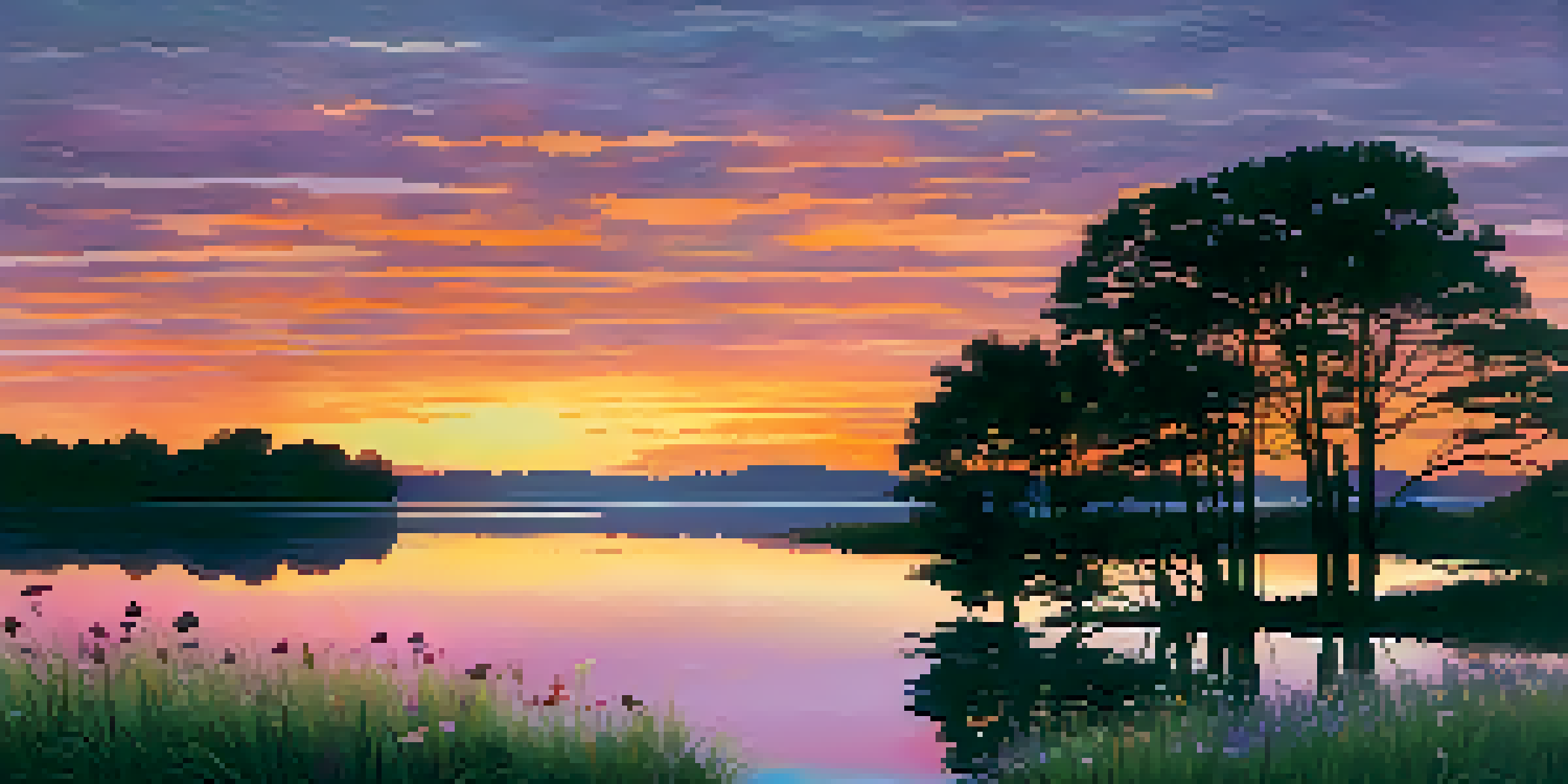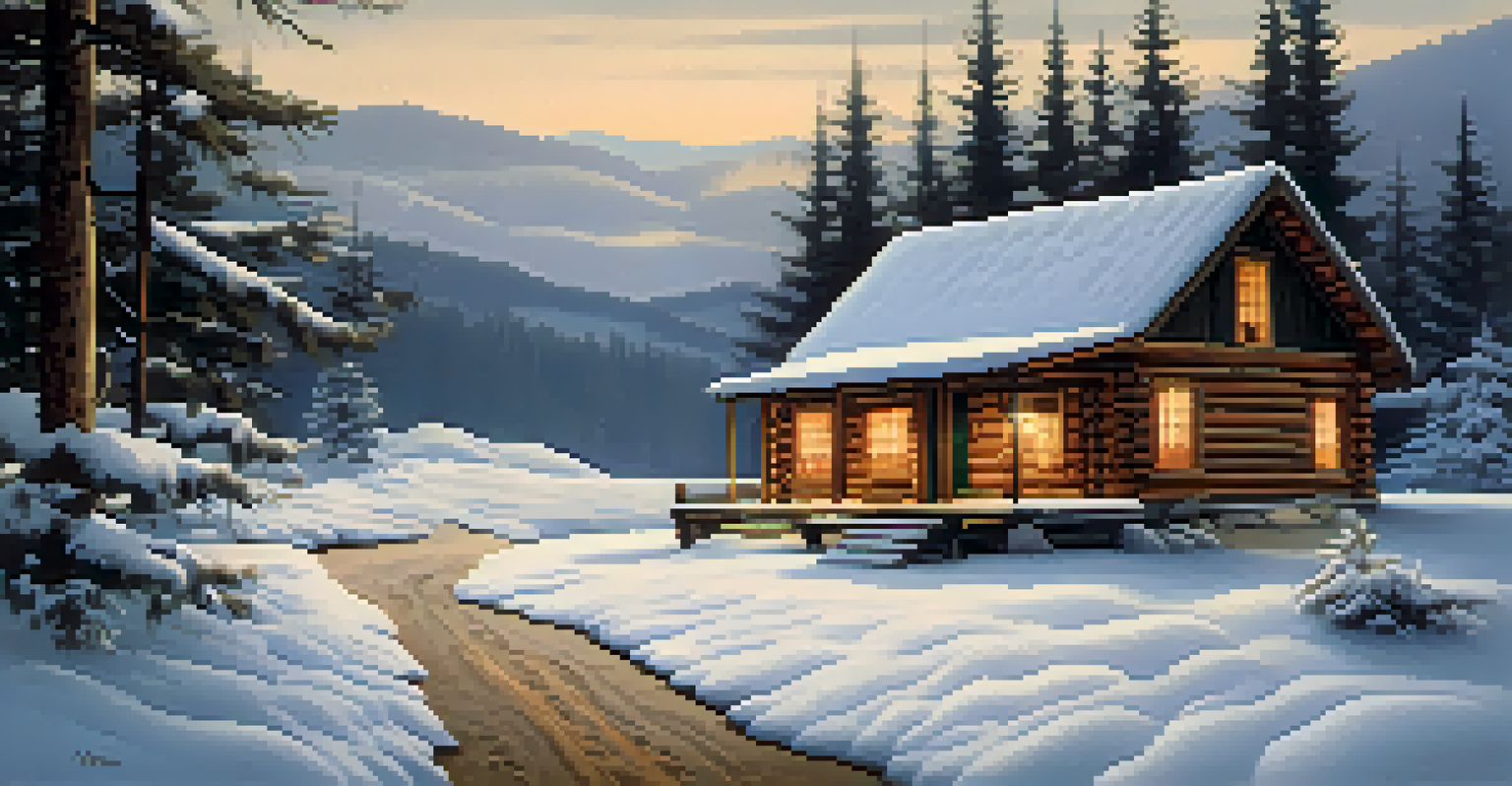The Passage of Time in Landscape Painting: A Historical View

Understanding the Concept of Time in Art
Time, while invisible, is a powerful element in landscape painting. Artists often capture not just the scene but also the feeling of a moment passing. This can evoke emotions tied to nostalgia, change, or the rhythm of nature itself.
Art is the most beautiful of all lies.
In landscape art, time can be represented through various techniques, such as the choice of light or seasonal elements. For instance, a painting depicting a sunset can symbolize the end of a day, while a snow-covered landscape may suggest winter's stillness.
By acknowledging the passage of time, artists invite viewers to reflect on their own experiences and the ever-changing nature of life, making each piece a dialogue between the observer and the artwork.
Early Landscape Paintings and Temporal Elements
The roots of landscape painting trace back to ancient civilizations, where artists often depicted natural scenes with little regard for time. However, as art evolved, so did the representation of temporal elements, particularly during the Renaissance period.

Artists like Leonardo da Vinci began to incorporate elements like changing light and atmospheric perspective, which helped convey a sense of time passing. This shift marked the beginning of a deeper exploration of how landscapes could tell stories over time.
Time Evoked in Landscape Art
Artists capture not only the scenery but also the emotions tied to the passage of time through their choice of light and seasonal elements.
As we move further into the Baroque period, artists such as Claude Lorrain began to depict more dynamic scenes, showcasing the effects of light and weather, which further enriched the narrative of time within landscapes.
The Romantic Era: Emotion and Time in Nature
The Romantic era of the 18th and 19th centuries brought a new emotional depth to landscape painting. Artists like J.M.W. Turner began to explore not just the physical aspects of nature, but also its emotional resonance over time.
The painter's only responsibility is to his art. He will not be made to care by the critics.
In Turner's works, the interplay of light, shadow, and atmospheric conditions often symbolizes the passage of time, invoking feelings of transience and change. His use of color and movement in clouds or water effectively communicates the fleeting nature of moments.
This era taught us that landscapes could be more than mere representations; they could be reflections of human emotion and experience, capturing the essence of time's impact on our surroundings.
Impressionism: Capturing Fleeting Moments
The Impressionist movement in the late 19th century revolutionized the portrayal of time in landscape painting. Artists like Claude Monet focused on capturing the effects of light and atmosphere during specific moments, often painting the same scene under different conditions.
Monet's series of haystacks or the Rouen Cathedral illustrates how light changes throughout the day, effectively showcasing the passage of time. These works emphasize the ephemeral quality of nature and our perception of it.
Cultural Perspectives on Time
Different cultures influence how time is represented in landscape painting, using nature's cycles to reflect various interpretations of life.
By using loose brush strokes and vibrant colors, Impressionists allowed viewers to feel the fleeting nature of time, creating a sense of immediacy and connection with their surroundings.
Modern and Contemporary Perspectives on Time
As we progressed into the 20th century, artists began to experiment with abstract forms and new mediums. The representation of time in landscape painting took on diverse meanings, often reflecting societal changes and technological advancements.
Artists like Georgia O'Keeffe explored the landscapes of the American Southwest, capturing the essence of time through bold colors and simplified forms. Her works often evoke a sense of timelessness, yet they are deeply rooted in specific moments and places.
Contemporary artists continue to challenge traditional notions of time in landscape painting, using innovative techniques that reflect the fast-paced nature of modern life, while also encouraging viewers to pause and reflect on their own experiences.
Cultural Influences on Time in Landscape Art
Cultural interpretations of time also play a significant role in landscape painting. Different cultures have distinct relationships with nature and time, influencing how landscapes are depicted.
For instance, Japanese landscape artists often incorporate elements of time through seasonal changes, using nature's cycle as a metaphor for life. This is evident in the works of artists like Hokusai, who captured the ephemeral beauty of cherry blossoms and changing seasons.
Future of Landscape Art
The evolution of technology, including digital and immersive experiences, is reshaping how time is expressed and perceived in landscape art.
Understanding these cultural perspectives enriches our appreciation of landscape paintings, inviting us to consider how time is experienced differently across the globe.
The Future of Time in Landscape Painting
As technology advances, the representation of time in landscape painting continues to evolve. Digital art forms allow artists to manipulate images in ways that traditional mediums cannot, creating dynamic landscapes that can shift and change at the viewer's command.
Virtual reality (VR) and augmented reality (AR) are also beginning to influence how we experience landscape art. These technologies can immerse viewers in a painting, allowing them to witness the passage of time in a way that transcends traditional frames.

Looking ahead, the future of landscape painting promises to be an exciting blend of traditional techniques and modern innovations, ensuring that the conversation around the passage of time remains vibrant and relevant.